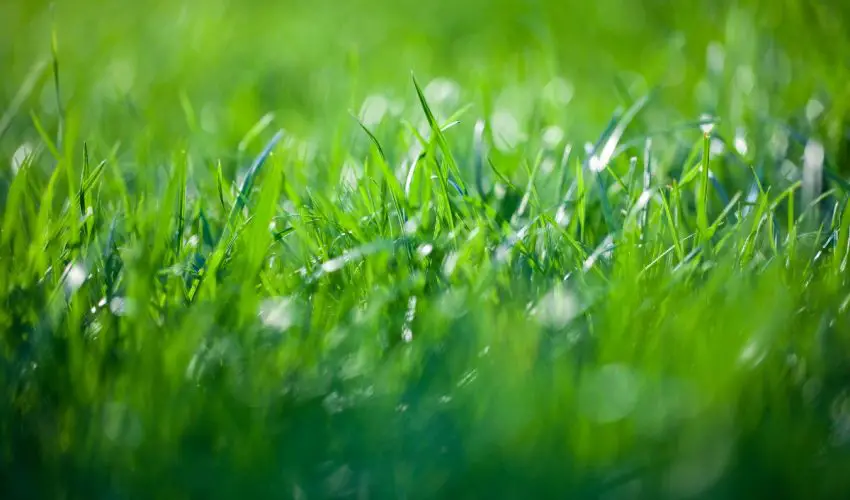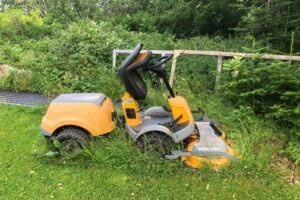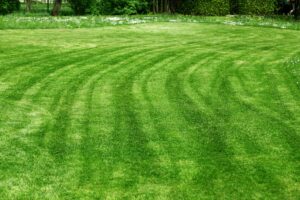In this article we’ll look into the causes of grass bubbles, but more importantly how to get rid of them and prevent them from happening again.
Table of Contents
ToggleWhat is a Grass Bubble?
A grass bubble, also known as a lawn bubble or lawn blister, is a cavity of water that forms under the surface of a lawn. This usually occurs after heavy rains or due to a broken water pipe, but can also be caused by poor soil conditions or plastic layers buried beneath the grass.
While grass bubbles are somewhat common and typically don’t cause any long-term damage to a lawn, they should be monitored and repaired if necessary. If you are experiencing grass bubbles on your lawn, make sure to address the underlying cause to prevent further damage to your lawn.
What Causes Grass Bubbles?
The causes of grass bubbles are complex and vary depending on the underlying soil conditions, but generally occur when rainwater flows over a lawn and becomes trapped under the grass root and rhizome layer.
If the soil underneath is already saturated due to other factors such as poor drainage or heavy compaction, this can lead to water pooling between the grass and dirt layers, forming a muddy cavity that is unable to drain naturally.
Although grass bubbles are generally temporary and typically disappear after a few days or weeks, they can cause serious damage to the health of your lawn if left untreated. If you notice signs of grass bubbles underneath your lawn, it’s important to work quickly to resolve the underlying issue and restore proper drainage so that there is no risk of long-term damage.
Some potential solutions for preventing and treating grass bubbles include addressing soil compaction, installing better drainage systems, or working with a lawn care expert to improve the health of your lawn overall.
Can Grass Bubbles Damage My Lawn?
Although grass bubbles typically disappear on their own after a few days or weeks, they can cause damage to your grass if not treated properly. This damage can be caused by the pooling of water around the roots of the grass, which can lead to poor drainage and nutrient uptake.
There is also a risk that certain fungal infections or plant diseases could be spread through the water trapped inside the grass bubble, which can further weaken your grass and lead to permanent damage.
How Do You Drain Grass Bubbles?
There are a few steps that you can take to get rid of grass bubbles and restore your lawn to its healthy and vibrant state.
The first step is to locate the grass bubble, then the next step is to create drainage points to remove excess water from the bubble by puncturing the bubble carefully to avoid damage. Lastly make sure to repair or amending the affected lawn area if needed.
Additionally, you may consider mulching or amending the soil with organic matter to help restore your lawn’s health and vitality.
How to prevent Grass Bubbles?
There are several options on how to prevent grass bubbles and restoring proper drainage to your lawn, each of which will depend on the underlying cause.
If the water beneath your grass is pooling due to poor soil conditions, the best solutions are aeration and deep-tilling to increase the water-absorption capacity of the soil.
You can also install a proper drainage systems such as French drains or building a rain garden to help redirect excess water and prevent pooling.
If you are unsure about how to address the underlying causes of grass bubbles or need professional help with repairing your lawn, it may be a good idea to work with a local lawn care expert.
Many landscaping and gardening services offer consulting and maintenance plans that can help identify problem areas in your lawn and give recommendations for improving soil quality, drainage, and the overall health of your lawn.
Conclusion
If you are experiencing grass bubbles in your lawn, it is important to address it as soon as possible by remove excess water from the bubble. When the water is drained, the next step is to identify the underlying cause and prevent further damage to your lawn.
Some potential solutions for treating grass bubbles include soil compaction, installing better drainage systems, or working with a lawn care expert to improve the health of your lawn overall.




